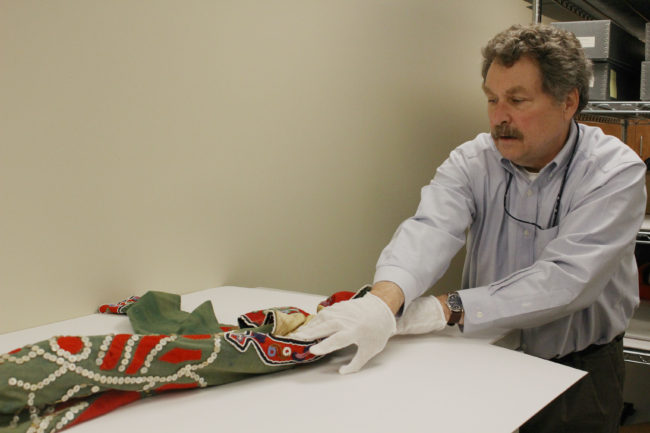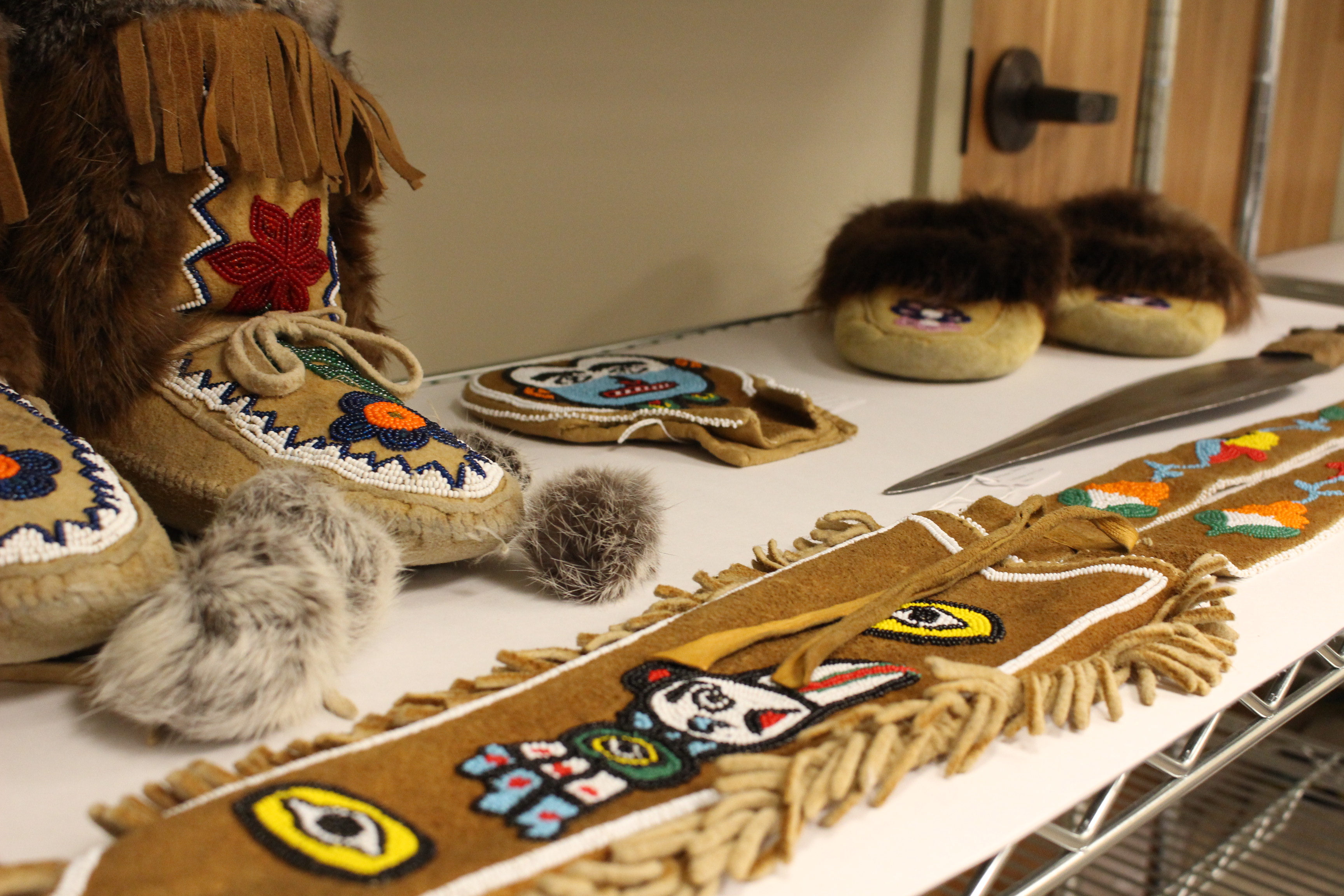
The country’s oldest theological school is selling off its Native art collection, and Sealaska Heritage Institute is asking the feds to investigate. Tlingit and Haida pieces are among the works–some of which might be sacred.
At Sealaska Heritage Institute, culture and history director Chuck Smythe walks down a flight of cedar steps to the basement, the place where Native artifacts are kept.
Behind a locked door are some of the pieces in the collection.
“We’re going into the conservation room. You hear the freezer going,” he says.
Items that arrive at the institute are cooled to 40 below to kill insects before the pieces go into long-term storage in a temperature controlled room. Smythe shows me a Southeast Native tunic, probably from the 20th century.
“It’s a green tunic with red border and it has flowers and designs.”
It has delicate beading on the sleeves and collar, a raven on the front. But that’s all we know. The tunic was repatriated from a museum in 2007. Information about which tribe and clan it belongs didn’t follow it back home.
“It’s hard. A lot of museums have very generalized identification of objects,” he says. “I used to work at the Smithsonian in the repatriation office and they have hundreds of objects that are just ‘Northwest Coast.’”

Even harder to track are the Native artifacts that fall into private collectors’ hands. That’s what the Peabody Essex Museum in Massachusetts says could happen to 80 pieces in its care because the owner wants to sell.
The museum has housed the collection since the 1940s; The Andover Newton Theological School is the owner.
Dan Monroe, the museum’s director, says the school informed him a few months ago.
“The 80 works are works that they’ve selected that have the greatest monetary value,” he says.
The college says it’s not an art curator; it’s an educational institution.
Sealaska Heritage Institute is questioning whether the artifacts are sacred–pieces used in ceremony. A federally supported entity, like a school or museum, is barred from selling those and obligated to return them to the tribes.

Rosita Worl, the president the institute, says the spirits of her ancestors are associated with those objects.
She notified the feds that some of the Tlingit and Haida pieces in the theological school’s collection could be subject to repatriation laws–particularly a halibut hook with a wolf crest and shamanic doll.
“We believe that everything has a spirit and that includes animate and inanimate objects,” she says.
Worl is Tlingit of the Eagle moiety and Thunderbird clan. She says she’s been trying to “get over the history” of how the theological school acquired these artifacts in the 19th century.
“We know they were well meaning in terms of trying to Christianize us, but we went through a lot of difficulties with that,” she says. “And I really want to respect all different religions but having the history of that overt suppression of our beliefs was difficult to take again.
The college is estimated to turn a million dollar profit. But Martin Copenhaver, the school’s president, says the pieces for sale are not sacred items. He believes the museum is engaging in an “ugly disinformation campaign.”
“I think the status quo works for them. They have the pieces. They’re able to display them for free. They did not pay for those,” he says. “I think it doesn’t work for them now if those pieces are in other museums.”
He says the school plans to sell to other museums, not private collectors.
“Unless those are ones who intend to then in turn donate them back,” says Copenhaver.
But museum president Dan Monroe says it typically doesn’t go that way.
“I would say it’s fair to summarize the frequency of that happening as highly infrequent,” says Monroe.
Appraisers have already been sent to assess the items but there’s no date for the sale yet. Worl says the willingness to sell the artifacts contradicts the school’s mission statement: “We will strive to be good stewards of the sacred tradition we have inherited.”
“My first wish is that they would say, ‘OK we recognize that Native people have these spiritual relationships to these objects.’ That they are significant,” Worl says. “I would hope that they would recognize that.”
Federal repatriation agents have opened an investigation.
